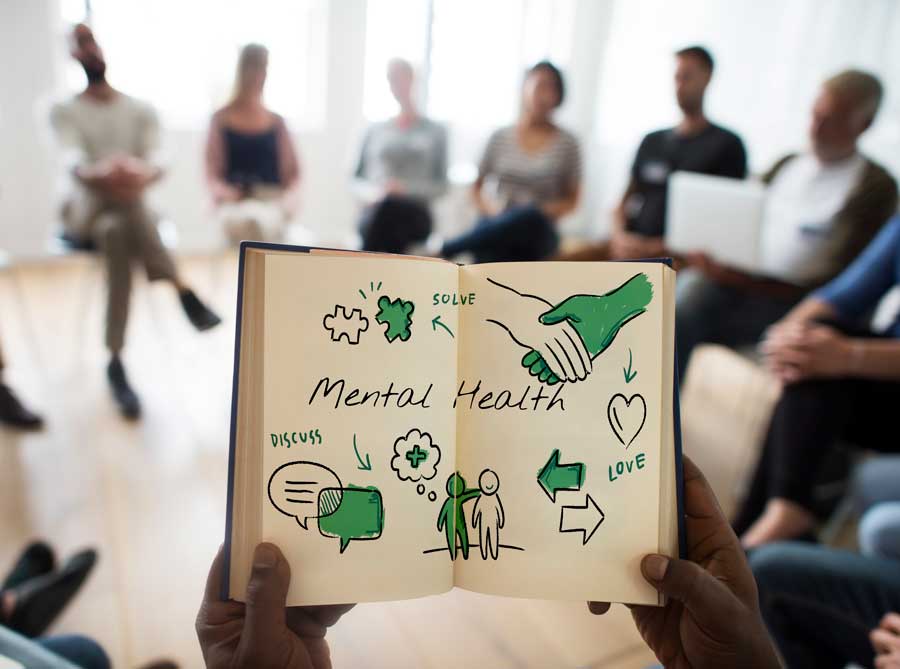Mental health stigma is a global issue, yet its nature and intensity vary significantly from one society to another. While some cultures have made impressive progress in normalizing conversations about depression, anxiety, and therapy, others continue to view these topics through the lens of shame, weakness, or even superstition. The way societies define, interpret, and respond to mental illness is deeply shaped by their history, religion, values, and social structures. Understanding why mental health stigma differs across societies is essential for creating global awareness, improving care systems, and promoting empathy across cultural lines.
The Cultural Lens of Mental Health
Every society interprets mental health through its unique cultural lens. In Western countries, mental illness is often seen through a biomedical perspective, where psychological disorders are treated like physical diseases requiring therapy or medication. Conversely, in many Asian, African, and Latin American cultures, mental health is often intertwined with spirituality, moral behavior, and family honor. These differing views influence not only how people seek help but also how communities perceive those who struggle. When mental distress is seen as a moral failing rather than a medical issue, stigma naturally intensifies.
Historical Roots of Stigma
Throughout history, mental illness has been misunderstood and misrepresented. In ancient societies, people with psychological conditions were often thought to be possessed by spirits or punished by divine forces. During the Middle Ages in Europe, such individuals were isolated or subjected to harsh treatments. In contrast, traditional healers in African or Indigenous cultures approached mental suffering through rituals, storytelling, and community involvement. These historical patterns still shape modern attitudes — some cultures view professional help as a last resort, while others have normalized therapy and medication.
Religion and Spiritual Beliefs
Religious and spiritual beliefs significantly influence how societies interpret mental health. In some cultures, faith offers healing and community support, while in others it reinforces stigma by associating illness with sin or weakness. For instance, some conservative communities may interpret mental distress as a lack of spiritual strength or punishment for moral transgressions. On the other hand, Buddhist and Hindu traditions often treat the mind and body as interconnected, promoting meditation, compassion, and mindfulness as paths toward balance. Understanding these religious frameworks helps explain why stigma can either worsen or lessen depending on spiritual interpretation.
Family and Community Dynamics
In collectivist societies such as Japan, India, or Nigeria, personal struggles are often viewed as reflections of the family unit. Seeking mental health care may be seen as bringing shame or dishonor to one’s relatives. This leads many individuals to hide their symptoms or rely on informal support instead of professional help. In contrast, Western cultures, which emphasize individuality, tend to encourage open dialogue and self-advocacy. However, this independence can also lead to isolation, where community support becomes secondary to personal coping. Thus, stigma manifests differently — as silence in one culture and as solitude in another.
Table: Cultural Differences in Mental Health Stigma
| Region/Culture | Common Perception of Mental Illness | Typical Coping Approach | Level of Stigma |
|---|---|---|---|
| Western (U.S., U.K.) | Medical and psychological disorder | Therapy, medication, self-help | Moderate, decreasing |
| East Asian (Japan, China, Korea) | Family or social burden, loss of honor | Family support, social conformity | High, slowly improving |
| Middle Eastern | Spiritual imbalance, moral issue | Religious counseling, family secrecy | High |
| African | Spiritual possession, cultural imbalance | Traditional healing, faith-based solutions | High to moderate |
| Scandinavian | Public health and social concern | Government-supported therapy, openness | Low |
The Role of Media and Education
Media representation plays a powerful role in shaping public perception. In societies where films, television, and journalism discuss mental health responsibly, stigma tends to decline. For example, Western media has increasingly portrayed therapy as a normal part of life, making it more acceptable to seek help. In contrast, regions where media avoids the topic or portrays mentally ill individuals as violent or unstable reinforce fear and prejudice. Education also plays a role — schools that teach emotional intelligence and stress management early on foster empathy and understanding.
Economic and Healthcare Inequalities
Access to quality mental health care strongly influences societal stigma. In low-income or developing countries, limited resources make treatment inaccessible, reinforcing the idea that mental illness is either untreatable or unimportant. Meanwhile, in wealthier nations, better access to therapists, medication, and awareness campaigns reduces stigma and promotes acceptance. However, even in advanced healthcare systems, social inequality can create barriers for minority groups, where cultural misunderstanding or language differences discourage people from seeking help.
Globalization and Cultural Exchange
As global communication increases, so does exposure to diverse views on mental health. Younger generations across the world are now influenced by Western media that promotes therapy, mindfulness, and openness. Social media platforms allow cross-cultural dialogue where people share stories, normalize vulnerability, and challenge outdated beliefs. However, globalization can also create tension — traditional societies may resist change, fearing cultural erosion. The balance between preserving identity and embracing progress continues to define how mental health stigma evolves.
The Psychological Impact of Stigma
Regardless of cultural background, stigma causes emotional and social harm. Individuals may internalize negative beliefs, leading to shame, self-doubt, and reluctance to seek help. Families may isolate affected members, while workplaces might discriminate against employees struggling with depression or anxiety. Studies show that stigma delays treatment, worsens symptoms, and increases suicide risk. Recognizing these psychological consequences highlights the urgent need for culturally tailored education and intervention strategies worldwide.
Reducing Stigma Through Cultural Sensitivity
Fighting mental health stigma requires understanding and respecting cultural differences. Public campaigns must be designed within cultural contexts — what works in one country may not resonate in another. In communities guided by spirituality, involving faith leaders can help bridge traditional beliefs with modern therapy. In collectivist cultures, focusing on family education can reduce generational stigma. Collaboration between psychologists, sociologists, and community leaders is essential for sustainable change.
FAQs
1. Why is mental health stigma stronger in some cultures than others?
Because cultural, religious, and social values shape how people interpret mental illness. In societies where emotional struggles are seen as moral or spiritual weaknesses, stigma tends to be higher.
2. How can globalization reduce mental health stigma?
By exposing societies to diverse perspectives, encouraging open dialogue, and promoting media that portrays mental health issues with empathy and accuracy.
3. What’s the most effective way to reduce mental health stigma globally?
Education, culturally sensitive awareness campaigns, and integrating traditional healing with modern psychology can help build understanding and acceptance across societies.



